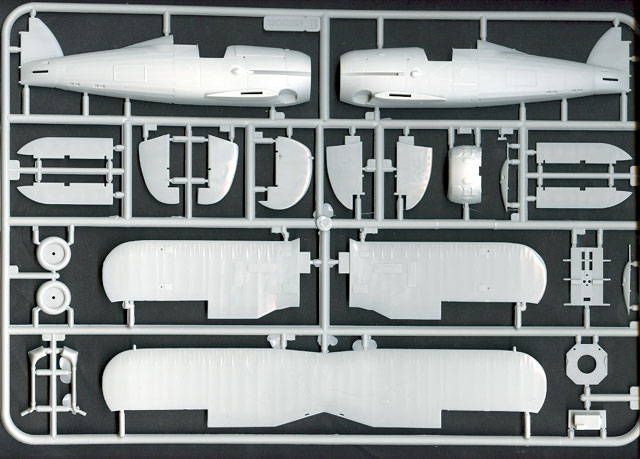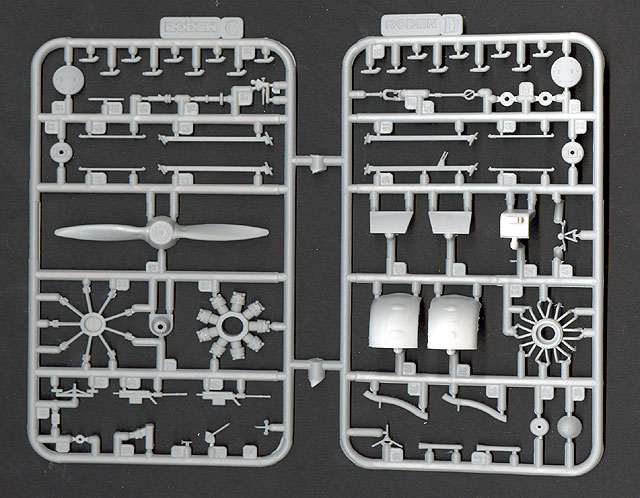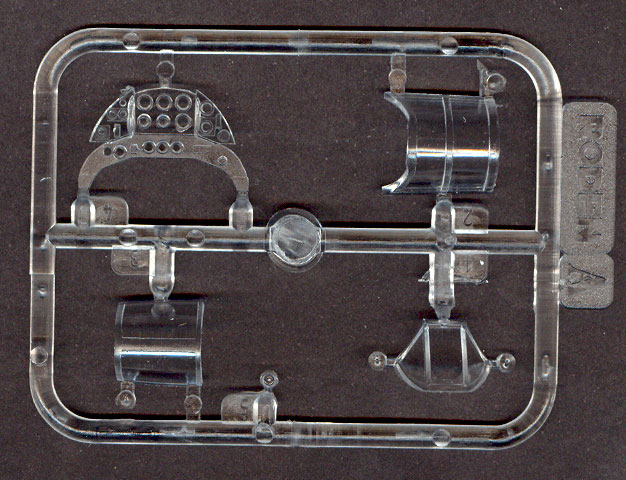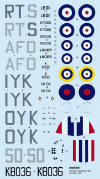S u m m a r y
|
| Catalogue
Number: |
RD408 |
| Scale: |
1/48 |
| Contents and Media: |
89 parts in light grey styrene;
5 parts in clear styrene; markings for five aircraft |
| Price: |
USD$23.96 from Squadron.com |
| Review Type: |
QuickLook |
| Advantages: |
Authentic surface texture;
important subject; plentiful
marking options; good details including cockpit and engine;
positionable flying surfaces; very thin trailing edges of flying
surfaces; great decal sheet including five marking options and decals
for the tyres! |
| Disadvantages: |
Some sink marks on fuselage and
propeller blades; poorly shaped seat; mould flow lines on wings and
other smaller parts. |
| Recommendation: |
Recommended to early WWII RAF
and biplane aficionados. |
Reviewed by Brett Green

Roden's 1/48
Scale Gladiator Mk. I is available online from Squadron.com
Roden's latest 1/48 scale release explores a significant combatant of
the early years of the Second World War - the Gloster Gladiator Mk. I.
Roden's 1/48 scale Gladiator comprises 89 parts in light grey styrene,
and an additional 5 parts in clear.
The parts are generally well moulded, and surface texture is very
impressive. The fabric over ribs looks just right. Panel lines, where
appropriate, are crisply engraved. Depiction of rib tape on the ailerons
is so subtle as to be almost invisible! There are a few sink marks and
stress marks on the outside of the fuselage. These are partly the result
of ambitious moulding of structural detail on the inside of the fuselage.
There are some bigger sink marks on the front face of the propeller blade
too. These will need some attention with putty and a sanding stick. Mould
flow lines are present on the wings and tailplanes, but they should
disappear under a coat of paint.

Locating pins are not widespread on the kit but engineering is robust.
Large tabs help locate the lower wing to each fuselage half, and the upper
wing is supplied as a single, full span part. The trailing edges on the
three wing parts are almost razor sharp - very impressive. Furthermore,
there are locating pins for the top and bottom of the outer struts
on each wing. The cabane struts are secured with locating pins too.
Some of the parts are incredibly fine and delicate. Of special note is
Part 68, the fin mast for the aerial wire. The trigger on the control
column and the pitot tubes moulded to the port strut are worthy of
attention too.
The engine is made up of 26 pieces not including the propeller, cowl
and tropical filter. This should look great when finished, but care must
be taken to ensure that it will fit in the three-piece cowl.

The cockpit is also convincing. Raised structural detail is present on
the sidewalls, and the impression of the partial floor is captured quite
well. The instrument panel is a clear part with decal instruments applied
to the rear. The seat lets down this otherwise good aspect of the kit. It
is slab-like, looking more like a refugee from a 1970s-era model than a
high quality offering of 2002.

 Flying
surfaces are supplied as separate parts. Flying
surfaces are supplied as separate parts.
The decals look first-rate (click thumbnail at right to view larger
image). Markings for five separate Gladiators are supplied. Colours,
registration and thinness all appear to be very good. The markings even
include tyre lettering - "Dunlop Aircraft Tyre"!
Instructions are called out in 16 steps using diagrams. Paint
references are supplied for Humbrol, Testor, Gunze and Lifecolor. Each
marking option is covered using a side profile plus upper and lower plan
view. A rigging diagram completes the package.
Roden's 1/48 scale is an impressive kit in the box.
Roden advise that they will also release a Sea Gladiator
and a Gladiator Mk. II. They will also be welcome.
Earlier Roden releases have revealed some construction
challenges, so careful preparation and test fitting is the best formula
for avoiding problems. In particular, I would recommend that the basic
engine part is test-fitted to the assembled cowl, and that the engine is
test fitted repeatedly after each extra component is added. The cockpit
components should be test-fitted in the fuselage to check width before
painting and assembly too.
I really like the look of this new Roden kit. After
careful test fitting, plus a little time with some filler on the small
sinkmarks and a replacement seat, this should be a fabulous looking
Gladiator
Recommended.
Review and Images Copyright © 2002 by
Brett Green
Page Created 12 December, 2002
Last updated 22 July, 2003
Back to HyperScale Main Page
Back to Reviews Page
|
Home | What's
New | Features
| Gallery |
Reviews | Reference
| Forum
| Search